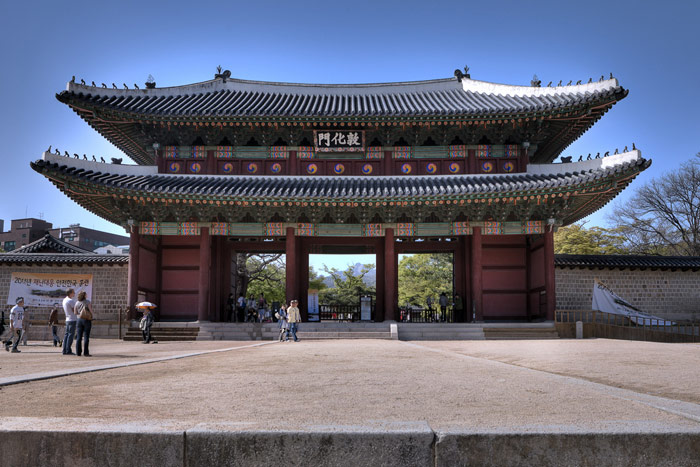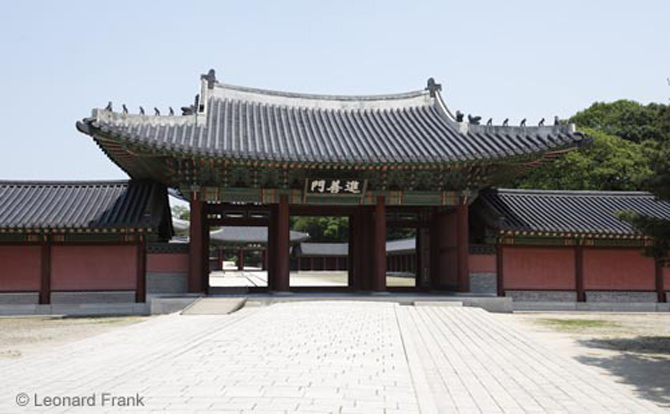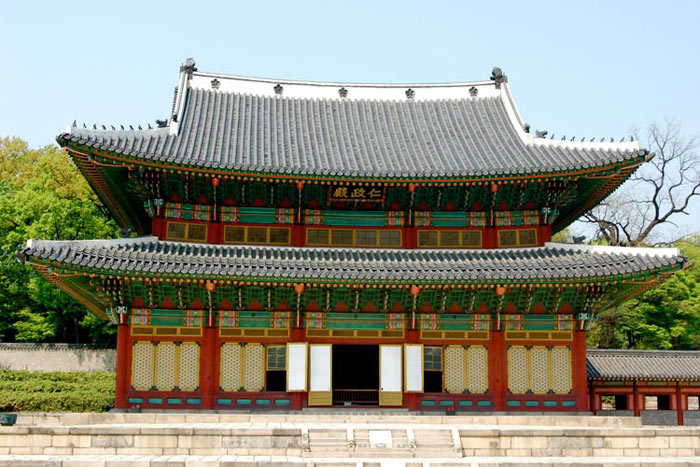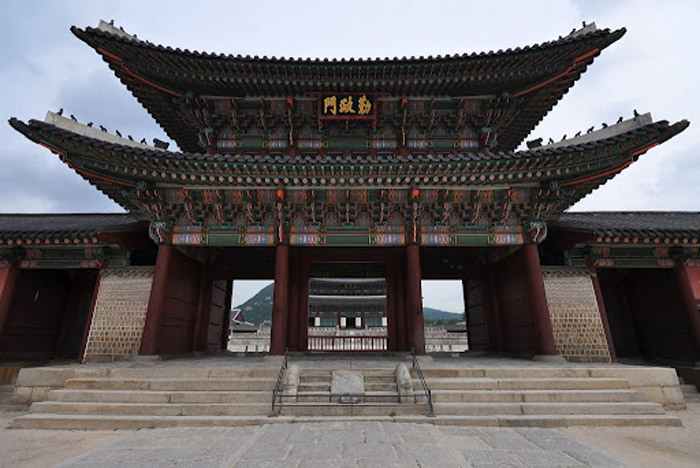Changdeokgung Palace
Unesco's Scientific, Educational and Cultural Organization has recognized Korea's Changdeokgung Palace as a World Cultural Heritage in 1997.

Changdeokgung is a palace located in a large park in the Korean capital of Korea. This is one of the five largest palaces in Korea, among them Changdeokgung is the second most important palace and plays the most important role in the Canh Phuc era lasting 270 years. The palace was built by kings under Joseon Dynasty during the period of 1395 - 1910.

So far, this palace is home to many of the best preserved buildings among the current heritage. The palace is located on a total area of 580,000 square meters; There are also many gardens, excluding secret gardens, covering an area of 120,000 square meters.

Historically recorded: The capital of the Joseon Dynasty was moved from Gaeseong in the north to Hanyang (present-day Seoul) in 1392, but the real palace was built starting in October 1404, in the fifth year. 4 reigned by King Taejong .
The main project Jeongjeon was built in February 1405 and was completed in October of the same year. Since then the palace is called Changdeokgung which means "Palace promotes virtue" . Since the palace is located in the east of the current Gyeongbokgung palace, this place is called the " Eastern Palace ".

The grounds of the palace are now larger than their original areas, because the successor kings often supplement and expand the area of their reign. Although Gyeongbokgung Palace is actually larger, Changdeokgung is a favorite place for kings because it is the most pure Korean Palace among all palaces. Changdeokgung Palace is designed and built in the architectural style handed down from the Three Kingdoms period of Korea, thus retaining many unique traditions of Korea.

After the Japanese occupation since 1910, the palace grounds were rearranged, some were destroyed, and even some buildings were brought to Japan. Like other palaces, many of the auxiliary works of the Changdeokgung palace have been removed. Particularly, Changdeokgung palace still retains its ideal position, in the east is Changgyeonggung palace, in the southeast is Jongmyo (The burial ground of royal lineage and memorial temple), the west is the official residence. , Gyeongbokgung palace.

The main structures of the Changdeokgung palace include the Donhwamun door, the beautiful Geumcheongyo granite bridge and Injeongjeon functioning as the court's working house. Seonjeongjeon is used for the affairs of the court between the king and his ministers. Daejojeon used as the queen's protection zone is also the king's sleeping place and the teaching area for princes. The original gardens were destroyed many times. During the Japanese occupation, the existing buildings were somewhat Westernized. The current ant works is a combination of both Korean and Western styles.

Another special feature of the Changdeokgung palace is that the construction has little effect on the natural environment and fully exploits harmony with nature. Buildings are designed and built to blend in with the pulse environment.
The garden construction space is calculated in detail to bring a pure, comfortable and pleasant atmosphere throughout the gardens as well as bring vitality to the buildings inside the palace.

During the history process since its construction, the Changdeokgung palace had a great influence on the development of Korean architecture in landscape planning, garden and related art for centuries afterwards. . It reflects the architectural values of sophistication and harmony with the surrounding beauty. The palace campus is a prominent example of Vien Dong palace architecture and garden design, especially the layout in which buildings are integrated and harmonious with natural scenery, suitable for topography and maintenance of native coverage.

Changdeokgung Palace is recognized by Unesco under the criteria (ii), (iii), (iv).
Criterion (ii): Changdeokgung Palace has a great influence on the development of garden architecture, landscape planning and art in Korea.
Criterion (iii): Changdeokgung Palace illustrates the principles of Confucian traditions through its architectural planning and landscape design. This work also represents Confucian influence in many areas from politics, to architecture . under the Joseon era.
Criterion (iv): Changdeokgung Palace is a striking example of Asian palace architecture, especially the harmonious combination of buildings and garden architecture to create an extremely beautiful landscape. High usage features.

- Memorize with the mysterious beauty of Biwon garden (Korea)
- Admire the 10 most magnificent palaces in the world
- Discover the world's largest gold-plated palace of the king of Brunei
- Explore the magnificent Royal Palace of Japan
- The Crystal Palace - The Crystal Palace
- Uncover the mystery of childbirth in the old palace ban
- Ruins of Qin Shihuang Palace surfaced on the beach
- Find the palace of Ode in the epic of the Morning
- Discovering vestiges of the palace during the Le So period in Thang Long Citadel
- Where is the bow in the Forbidden City?
- The 3000-year-old palace suspects King Solomon
- Found the palace in the tomb of Qin Shihuang
 Suzhou classic bonsai garden - China
Suzhou classic bonsai garden - China Chau Nguyen Dynasty
Chau Nguyen Dynasty Thai Son Mountain - World Wonder
Thai Son Mountain - World Wonder Ancient villages of Shirakawa-go and Gokayama
Ancient villages of Shirakawa-go and Gokayama Discover the life of concubines in the Tang Dynasty's 'harem'
Discover the life of concubines in the Tang Dynasty's 'harem'  Visit the palaces where the current kings and queens of the world are still living today
Visit the palaces where the current kings and queens of the world are still living today  Palace maidens can't give birth or get married after leaving the palace: In addition to dangerous diseases, there are also reasons for these reasons
Palace maidens can't give birth or get married after leaving the palace: In addition to dangerous diseases, there are also reasons for these reasons  Decipher the place rumored to cause the death of 28 queens in the Forbidden City
Decipher the place rumored to cause the death of 28 queens in the Forbidden City  Why is the bodyguard not as pure as the eunuch?
Why is the bodyguard not as pure as the eunuch?  Ancient palace maids were forced to sleep on their side: The real reason why everyone is angry!
Ancient palace maids were forced to sleep on their side: The real reason why everyone is angry! 